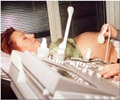Having low oxygen conditions in the uterus as a result of smoking, pre-eclampsia or just living in high altitudes in the pregnancy stage can cause fertility problems in their newborn baby girl, finds a new study.

‘Through the study, the women at risk will be able to take action: by having children earlier in life or looking to assisted reproduction, such as IVF, there should be no reason why these women cannot have children’





The research, led by scientists at the University of Cambridge, found that exposing fetuses to chronic hypoxia (low oxygen levels) during development led to them having advanced aging of the ovaries and fewer eggs available.Hypoxia in the womb can be caused by a number of factors, including smoking, pre-eclampsia, maternal obesity, and living at high altitude. The condition is already known to have potential long term effects on the health of offspring, including increased risk of heart disease. However, this study, published today in The FASEB Journal, is the first time it has been shown to affect fertility.
To investigate the effects of hypoxia, researchers from the Metabolic Research Laboratories at the University of Cambridge placed pregnant female rats in reduced levels of oxygen (13%, compared to the standard 21% found in air) from day six to day 20 of their pregnancy. They then examined the reproductive tract of their female pups at age four months.
Rats are a useful model for studying pregnancy. As a mammal, their bodies and underlying biology share some key similarities with those of humans. However, their gestation period and lifecycles are much shorter than those of humans, making them an ideal animal model in which to study pregnancy and fetal development.
When the team examined the pups, they found a decrease in the number of ovarian follicles in the reproductive tract. Females are born with fixed numbers of follicles, each with the potential of developing into an egg. In humans, women usually expend all their eggs around the age of fifty, at which point they will enter menopause.
Advertisement
"It's as if low levels of oxygen caused the female's ovarian tissue to age faster," says Dr. Catherine Aiken from the University of Cambridge. "Biologically, the tissue appears older, and the female would run out of eggs - in other words, become infertile - at a younger age."
Advertisement
While women are recommended not to smoke during pregnancy, other causes of hypoxia, such as pre-eclampsia and living in a high altitude, are beyond their control. However, says Dr. Aiken, the findings of her team's research may prove helpful to women who were exposed to low levels of oxygen during their mother's pregnancy.
"Now that we've seen a link between hypoxia and fertility problems in rats, we know what to look for in women," she says. "If the same turns out to be true for them, then women at risk will be able to take action: by having children earlier in life or looking to assisted reproduction, such as IVF, there should be no reason why these women cannot have children.."
Dr. Aiken is also involved in research looking at whether anti-oxidant medication may help undo any damage caused by hypoxia.
Source-Eurekalert















